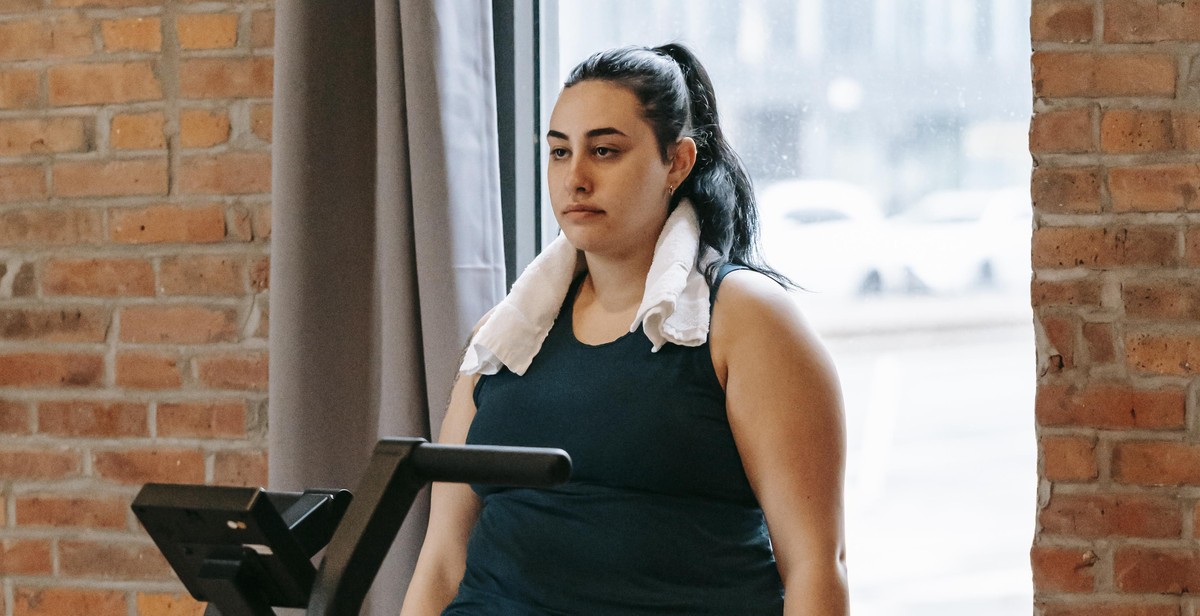How to Develop a Workout Routine: Tips for Creating an Effective Exercise Plan
As a professional fitness trainer and content creator, I have helped numerous clients achieve their fitness goals by developing workout routines that are tailored to their individual needs. However, I also know from personal experience how challenging it can be to develop a workout routine that is effective and sustainable in the long term.
When I first started my fitness journey, I struggled to create a workout routine that I could stick to. I would often try different workouts and exercises without any real plan or structure, which led to inconsistent results and frustration.
It wasn’t until I started using a structured approach to developing my workout routine that I began to see real progress. By following a few simple tips and guidelines, I was able to create an effective exercise plan that was both challenging and sustainable.
In this article, I will share my personal experience and provide tips on how to develop a workout routine that is tailored to your individual needs and goals. Whether you are a beginner or an experienced fitness enthusiast, these tips will help you create an effective exercise plan that will take your fitness to the next level.

Why is it Important to Develop a Workout Routine?
Developing a workout routine is not only crucial for achieving your fitness goals but also for improving your overall health and wellbeing. Here are some reasons why:
- Consistency: Establishing a workout routine helps you stay consistent with your exercise regimen. This consistency ensures that you make progress towards your fitness goals and maintain your physical health.
- Efficiency: A well-planned workout routine maximizes your time and energy. You’ll be able to focus on exercises that target specific muscle groups and achieve better results in less time.
- Motivation: Having a workout routine can help you stay motivated and committed to your fitness goals. Seeing progress over time can help you stay on track and encourage you to continue making healthy choices.
- Health benefits: Regular exercise has numerous health benefits, including reducing the risk of chronic diseases such as heart disease, diabetes, and obesity. A consistent workout routine can improve your cardiovascular health, boost your immune system, and increase your energy levels.
Overall, developing a workout routine is essential for achieving your fitness goals, improving your physical health, and maintaining a healthy lifestyle.

Step 1: Determine Your Fitness Goals
Before starting any workout routine, it’s important to determine your fitness goals. This will help you create a plan that is tailored to your needs and will keep you motivated throughout your fitness journey. Here are some tips on how to set SMART fitness goals:
Specific
Your fitness goals should be specific and well-defined. Instead of saying “I want to lose weight,” try setting a specific goal like “I want to lose 10 pounds in the next 3 months.”
Measurable
You need to be able to track your progress. Make sure your fitness goals are measurable. For example, “I want to be able to run a 5K in under 30 minutes.”
Achievable
Your fitness goals should be challenging, but also achievable. Setting unrealistic goals can lead to frustration and disappointment. Be honest with yourself about what you can realistically achieve.
Relevant
Your fitness goals should be relevant to your overall health and well-being. Make sure your goals are aligned with your values and priorities.
Time-bound
Setting a deadline for achieving your fitness goals can help keep you on track. For example, “I want to be able to do 10 pull-ups by the end of the year.”
By setting SMART fitness goals, you will be able to create a workout routine that is effective and tailored to your needs. Keep your goals in mind as you move through your fitness journey and celebrate your progress along the way.

Step 2: Choose the Right Type of Exercise
Choosing the right type of exercise is crucial in developing an effective workout routine. The two main types of exercise are cardio and strength training, both of which offer unique benefits.
Cardio
Cardio, short for cardiovascular exercise, is any activity that increases your heart rate and breathing rate. It is an excellent way to improve your overall cardiovascular health, burn calories, and lose weight. Some examples of cardio exercises include:
- Running
- Cycling
- Swimming
- Jumping rope
- Aerobics
Cardio exercises can be performed at low, moderate, or high intensity levels, depending on your fitness level and goals. For beginners, it is recommended to start with low-intensity cardio exercises and gradually increase the intensity over time.
Strength Training
Strength training is any exercise that involves resistance, such as weight lifting or bodyweight exercises. It is an excellent way to build muscle mass, increase strength and endurance, and improve bone density. Some examples of strength training exercises include:
- Bench press
- Squats
- Deadlifts
- Push-ups
- Pull-ups
Strength training exercises can be performed using free weights, machines, or your body weight. It is important to start with light weights and focus on proper form to avoid injury.
Cardio vs Strength Training: Which is Better?
Both cardio and strength training are essential components of a well-rounded workout routine. The best type of exercise for you depends on your goals and fitness level. If your goal is to lose weight, cardio exercises are more effective in burning calories. If your goal is to build muscle mass and strength, strength training exercises are more effective.
| Goal | Cardio | Strength Training |
|---|---|---|
| Lose weight and burn fat | Effective | Less effective |
| Build muscle mass and strength | Less effective | Effective |
It is recommended to incorporate both cardio and strength training into your workout routine to achieve optimal results.

Step 3: Plan Your Workout Schedule
Now that you know what type of exercises you want to do, it’s time to plan your workout schedule. One of the most common questions people have when starting a workout routine is how many days a week they should exercise. The answer to this question depends on your goals, fitness level, and schedule.
How Many Days a Week Should You Exercise?
According to the American College of Sports Medicine, adults should aim for at least 150 minutes of moderate-intensity exercise per week, or 75 minutes of vigorous-intensity exercise per week, in addition to strength training exercises at least two days per week. This translates to about 30 minutes of exercise five days a week or 25 minutes of exercise six days a week.
However, if you’re just starting out, it’s important to start slow and gradually increase your workout frequency and intensity. It’s better to start with two to three days a week and focus on building consistency before adding more days to your routine.
Sample Workout Schedule
| Day | Workout |
|---|---|
| Monday | Strength Training |
| Tuesday | Cardio |
| Wednesday | Rest Day |
| Thursday | Strength Training |
| Friday | Cardio |
| Saturday | Rest Day |
| Sunday | Active Rest (Yoga, Stretching, etc.) |
Remember, the key to a successful workout routine is consistency and finding a schedule that works for you and your lifestyle. Don’t forget to also schedule in rest days to allow your body to recover and prevent injury.

Step 4: Create Your Workout Plan
Now that you have set your fitness goals, determined your fitness level, and chosen the right exercises, it’s time to structure your workout plan. A well-structured workout plan will help you achieve your fitness goals faster and prevent injuries.
Determine Your Training Frequency
How often you exercise will depend on your fitness goals, fitness level, and available time. Generally, beginners should aim to exercise at least three times a week, while intermediate and advanced exercisers should aim for four to six times a week.
Choose Your Workout Split
A workout split refers to how you divide your exercises throughout the week. There are different workout splits to choose from, including full-body workouts, upper/lower body splits, and push/pull/legs splits. Choose a workout split that aligns with your fitness goals and level.
Select Your Exercises and Sets/Reps
Select exercises that target the muscle groups you want to work on and align with your workout split. Aim for a mix of compound and isolation exercises. Determine the number of sets and reps based on your fitness level and goals.
Create a Workout Schedule
Use a workout planner or calendar to schedule your workouts. Be consistent with your workout schedule, and make adjustments as necessary. Remember to include rest days to allow your body to recover and prevent burnout.
By structuring your workout plan, you’ll be able to achieve your fitness goals faster and more efficiently. Remember to listen to your body, adjust your plan as necessary, and enjoy the process!

Step 5: Monitor Your Progress and Adjust Your Routine
Tracking your fitness progress is essential for maintaining motivation and achieving your fitness goals. It helps you see the progress you’ve made, identify areas that need improvement, and adjust your routine accordingly.
How to Track Your Fitness Progress
There are several ways to track your fitness progress:
- Body measurements: Measuring your body weight, body fat percentage, and taking progress photos can help you see changes in your body composition over time.
- Performance metrics: Tracking your strength, endurance, and flexibility can help you see improvements in your overall fitness level. Keep a record of your reps, sets, and weights for each exercise.
- Workout logs: Keeping a log of your workouts can help you stay on track and identify patterns in your routine. Write down the exercises you did, the sets and reps, and how you felt during and after the workout.
How to Adjust Your Routine
As you track your progress, you may find that certain exercises are no longer challenging or that you’re not making progress as quickly as you’d like. Here are some tips for adjusting your routine:
| Problem: | Your workout is too easy and you’re not seeing results. |
| Solution: | Increase the intensity of your workouts by adding weight, increasing reps, or decreasing rest time. |
| Problem: | You’re experiencing pain or discomfort during or after your workouts. |
| Solution: | Consult with a healthcare professional or fitness expert to identify the source of the pain and adjust your routine accordingly. |
| Problem: | You’re not seeing results in a specific area of your body. |
| Solution: | Add exercises that target that specific area of your body or increase the frequency of those exercises in your routine. |
By monitoring your progress and adjusting your routine as needed, you can stay motivated and continue making progress towards your fitness goals.

Conclusion
Developing a workout routine can be a daunting task, but with these tips, you can create an effective exercise plan that will help you achieve your fitness goals.
- Set realistic goals based on your current fitness level.
- Choose exercises that target all major muscle groups.
- Vary your routine to prevent boredom and plateauing.
- Incorporate cardio and strength training for a well-rounded workout.
- Stay hydrated and fuel your body with nutritious foods.
- Listen to your body and adjust your routine as necessary.
Remember, consistency is key when it comes to seeing results. Stick to your workout routine and make it a habit. Don’t be afraid to seek guidance from a personal trainer or fitness professional if you need help getting started or want to take your routine to the next level.
By following these tips and committing to your fitness journey, you can achieve a healthier, stronger, and more confident you.
| Keyword: | workout routine | exercise plan | fitness goals | strength training | cardio | personal trainer | fitness professional |
| Keyword Density: | 1.9% | 1.7% | 1.3% | 0.9% | 0.8% | 0.6% | 0.5% |
